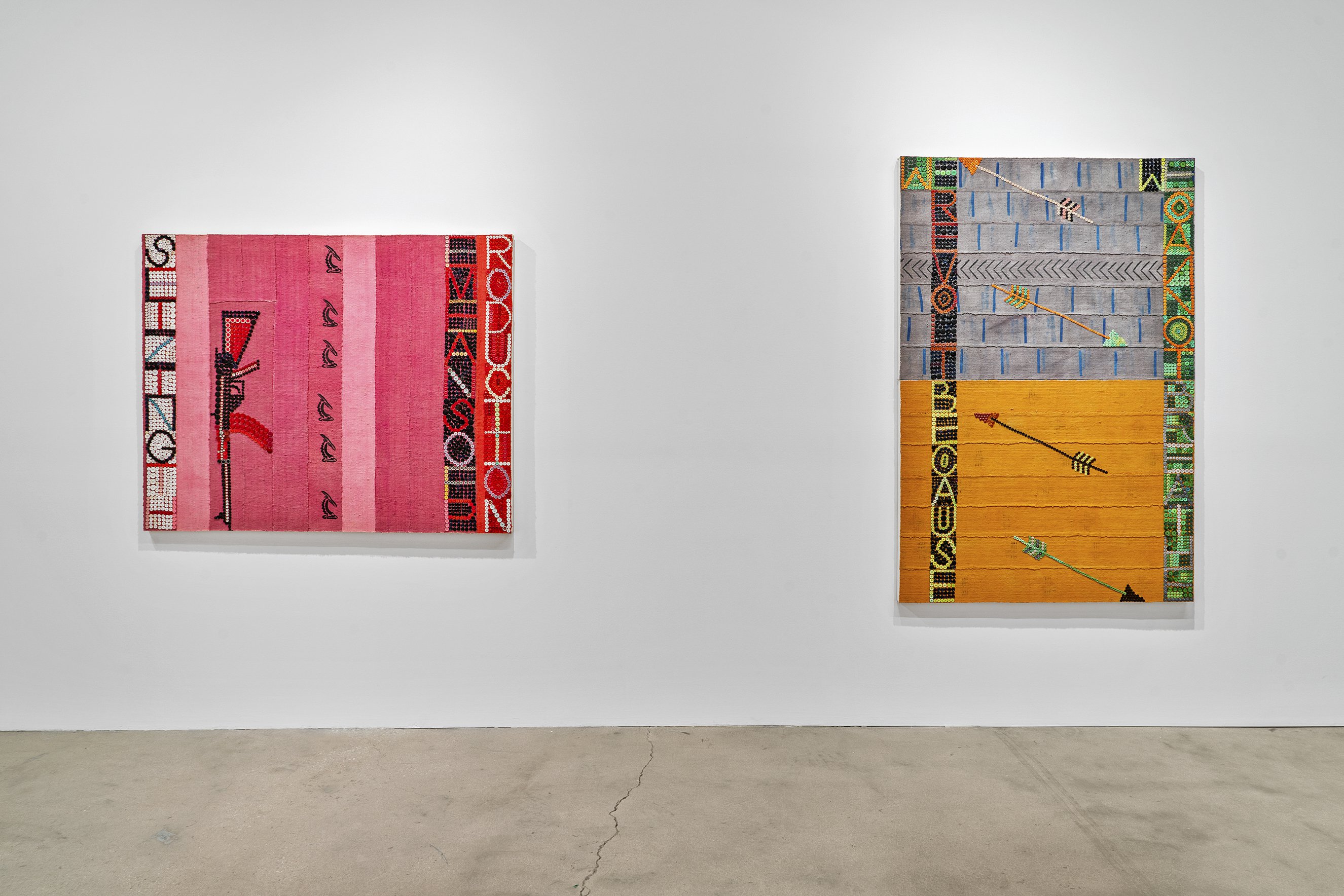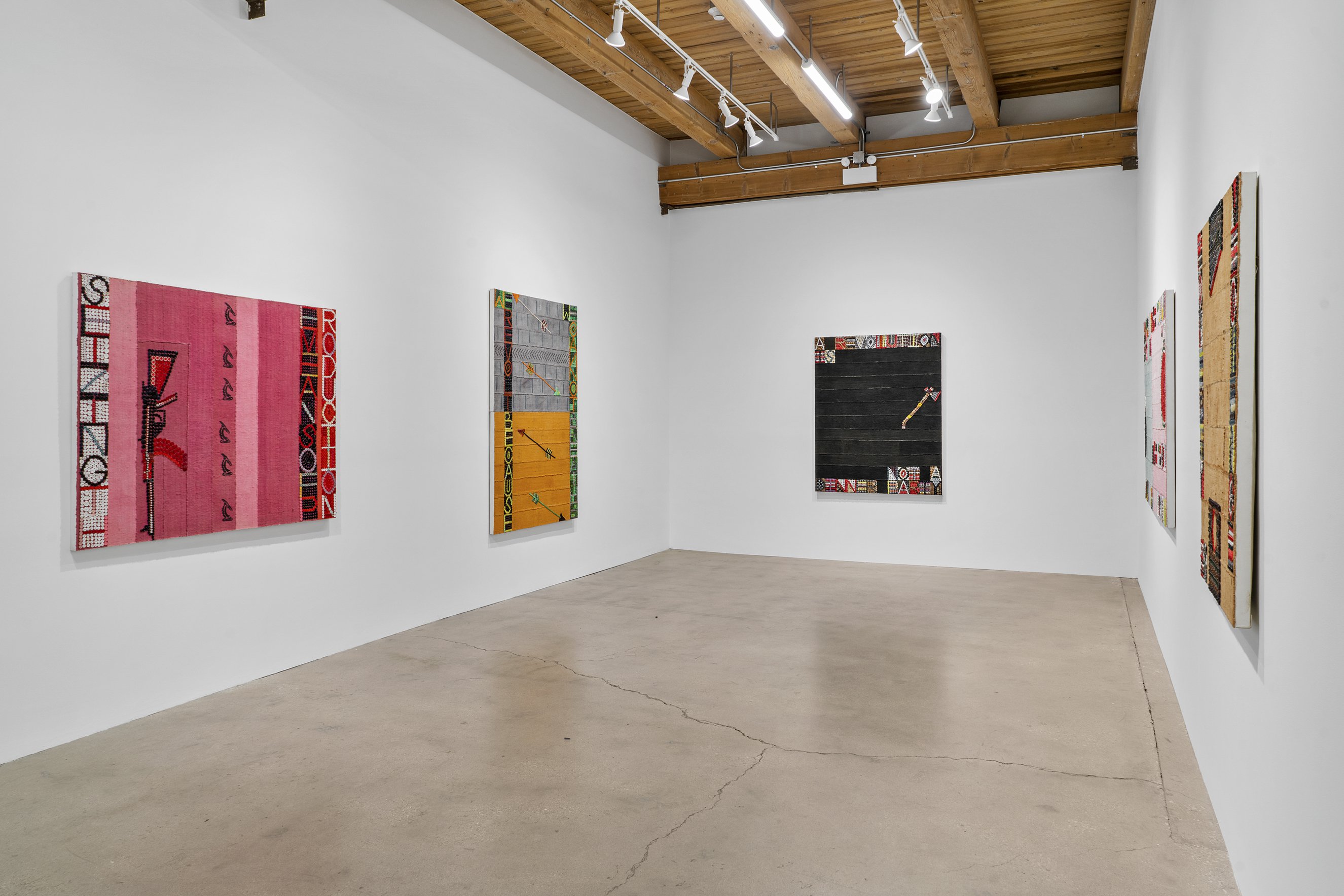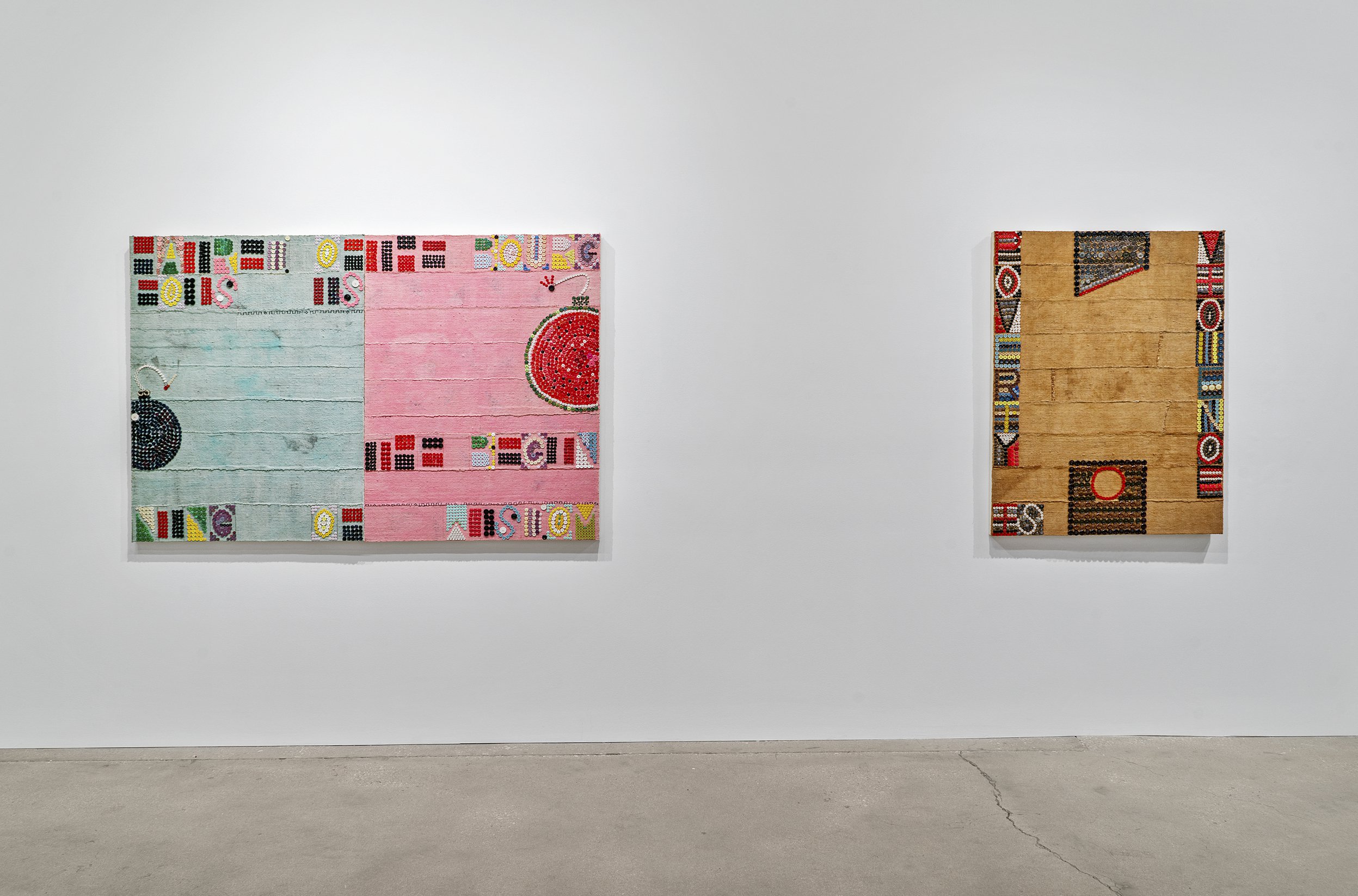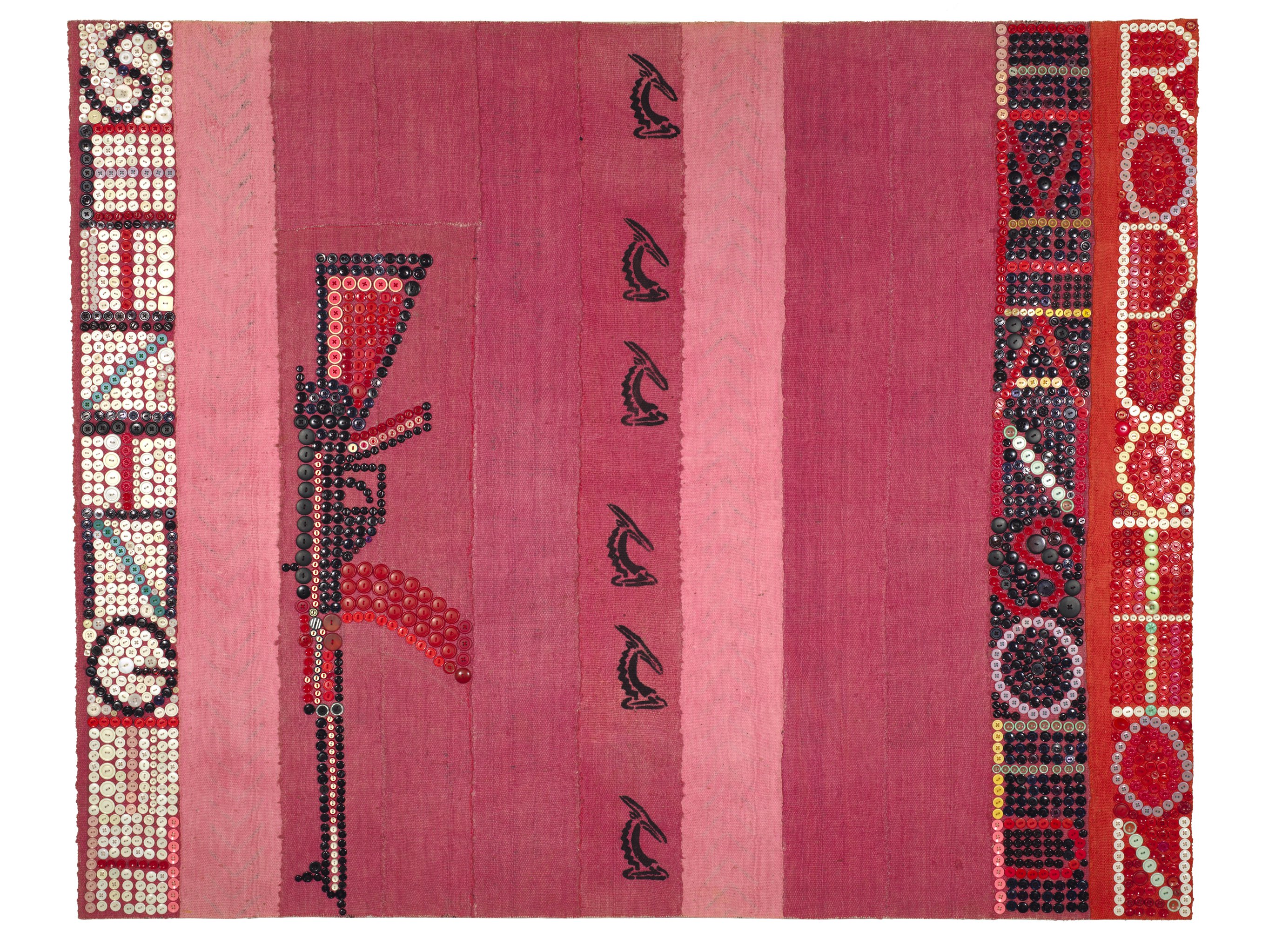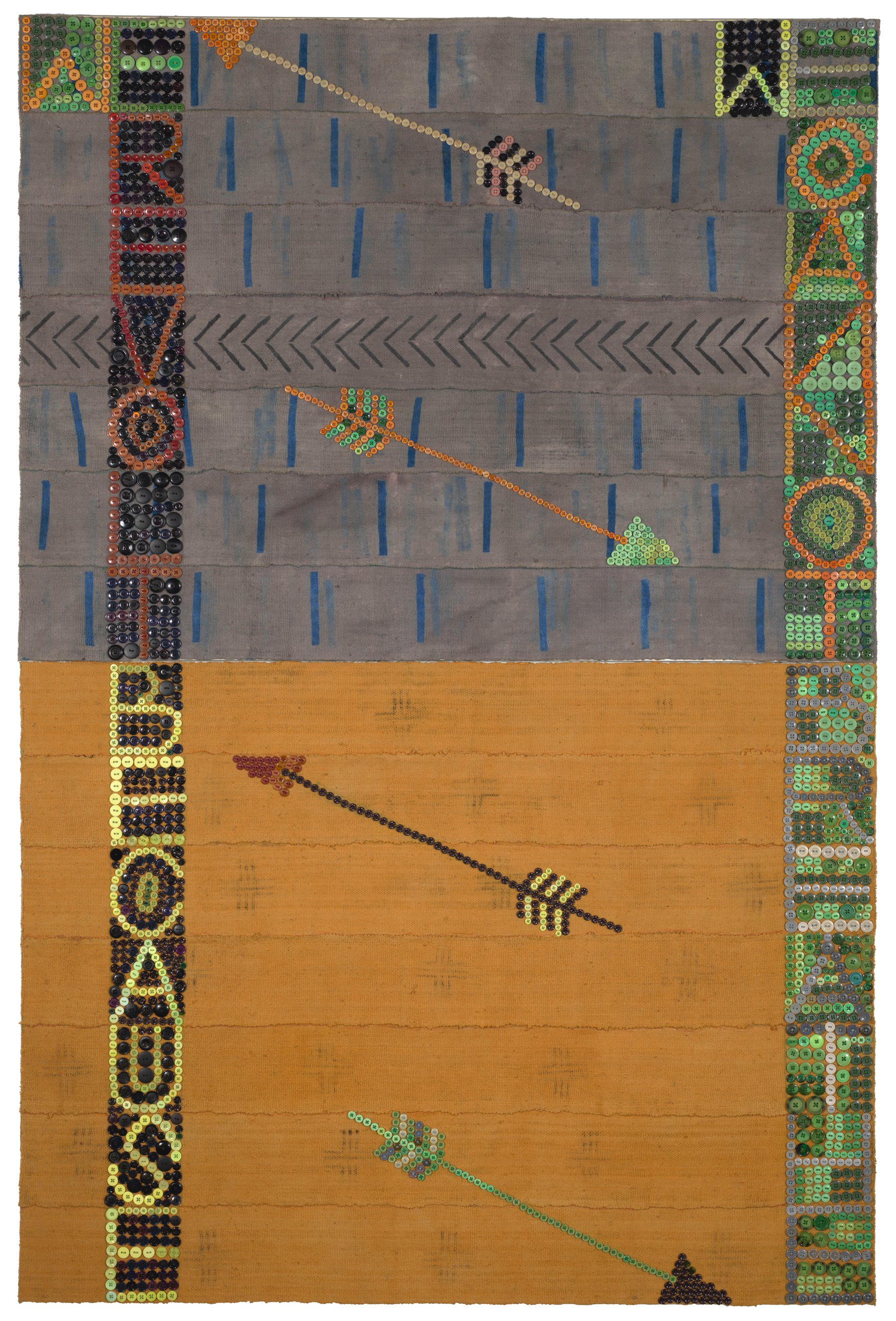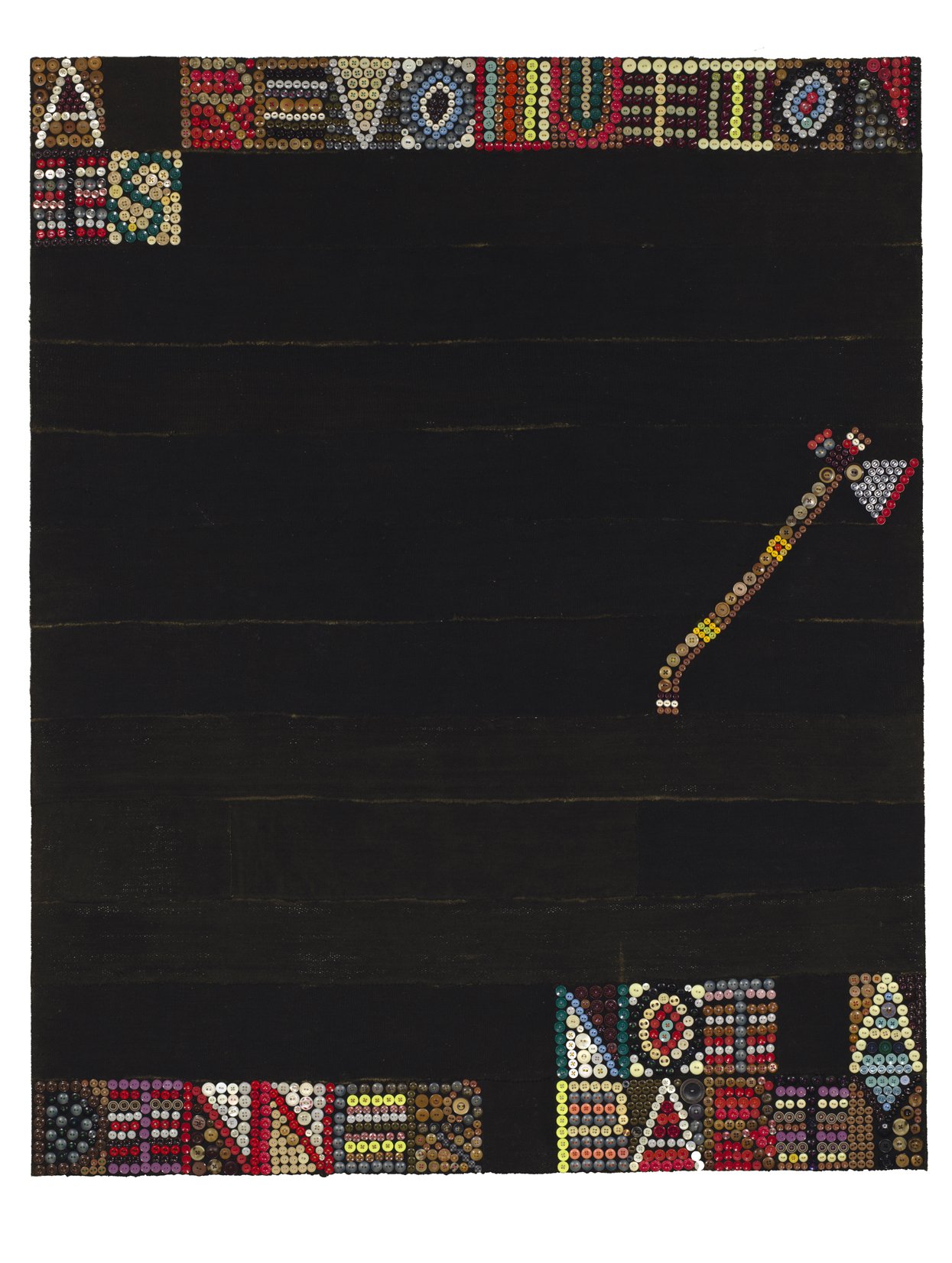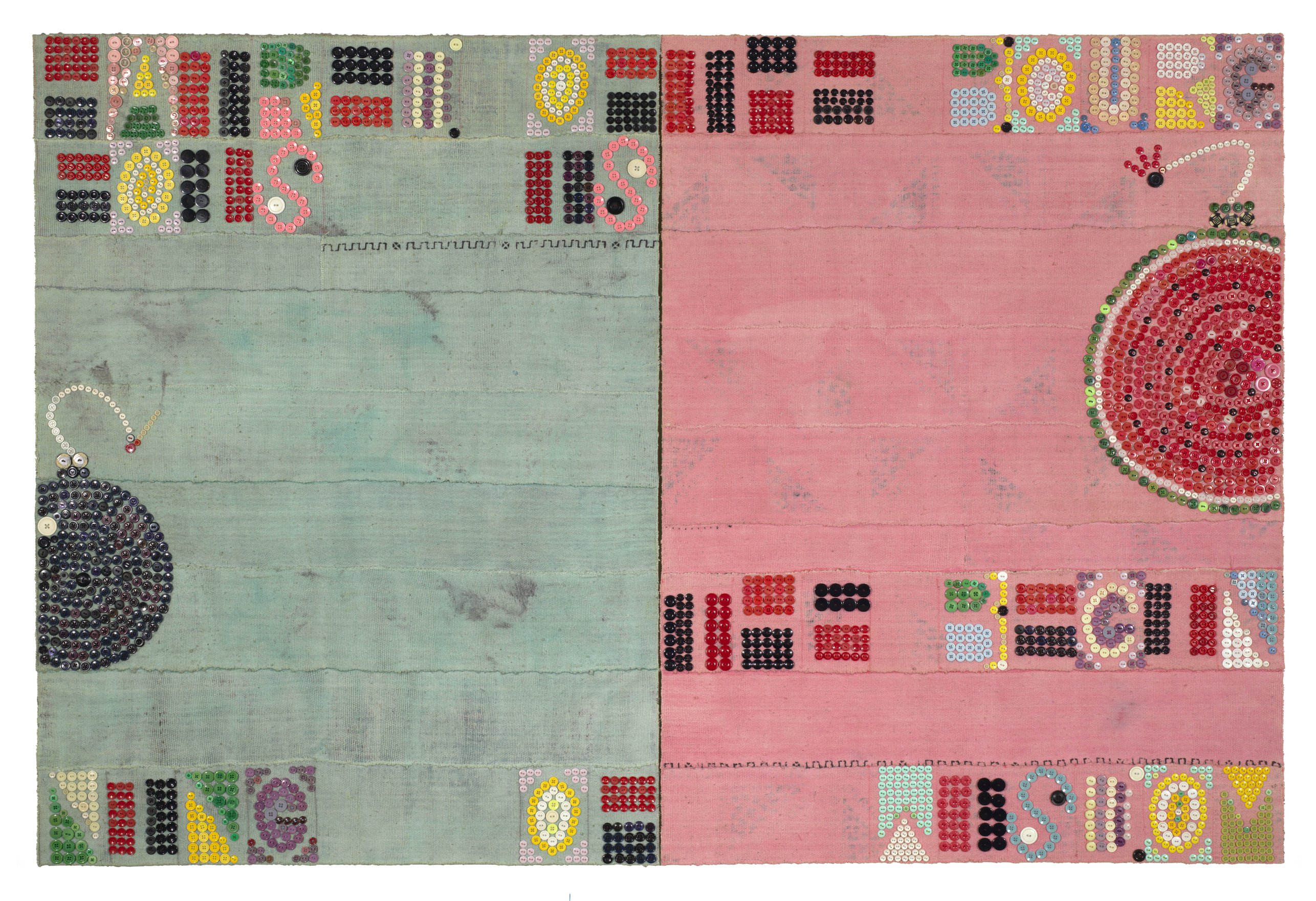Jeff Perrone A Revolution Is Not a Dinner Party
May 5 - June 17, 2023
North Gallery
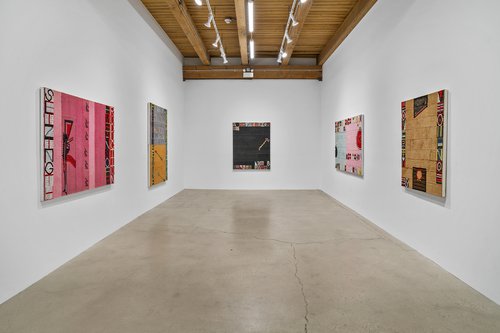



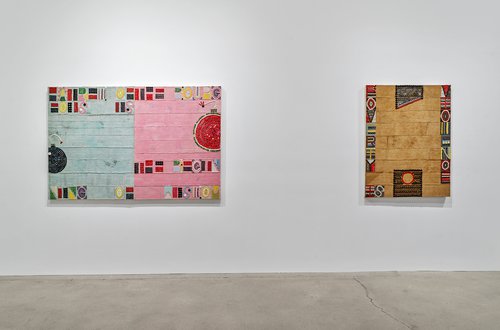
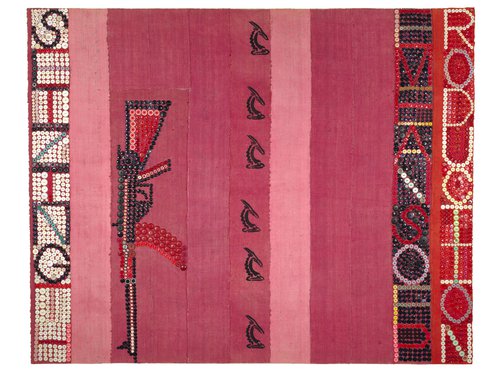
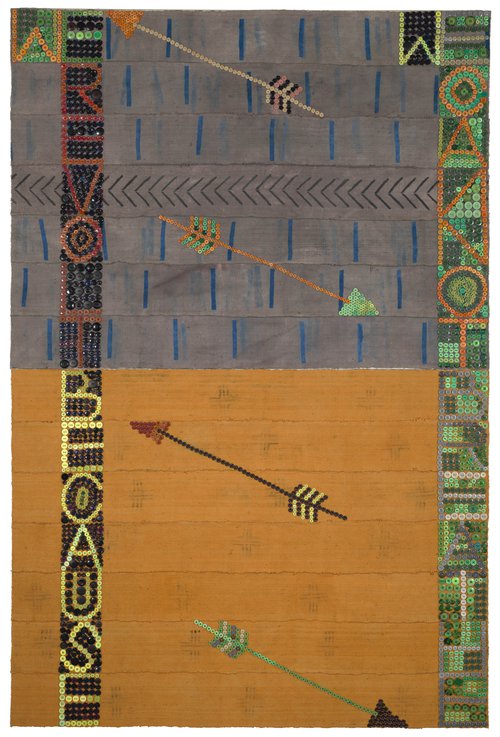
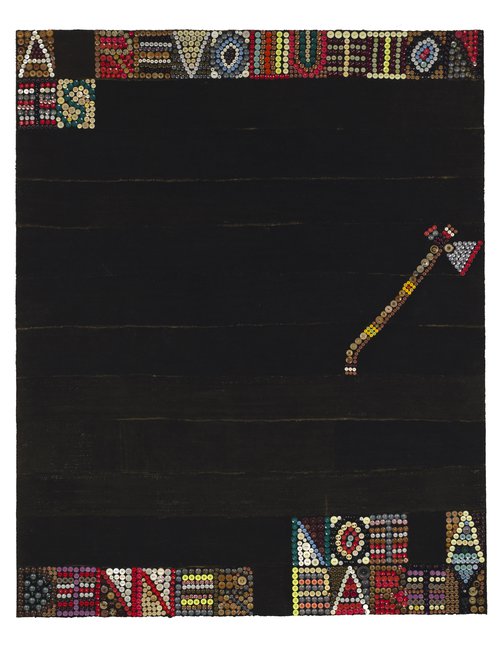
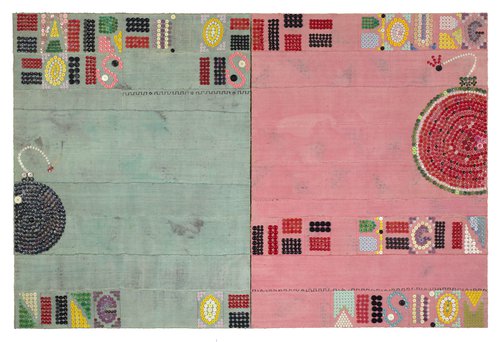
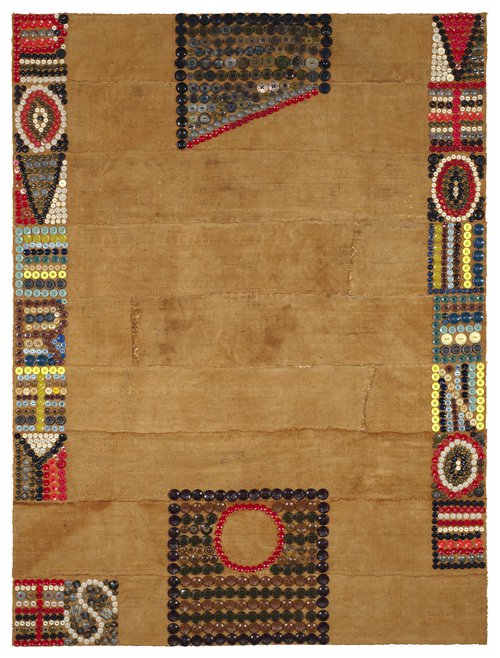
Press Release
OPENING RECEPTION • FRIDAY, MAY 5 • 6:00–8:00 PM
In the north gallery, Corbett vs. Dempsey is honored to present Jeff Perrone: A Revolution Is Not a Dinner Party, a selection of seven new canvas works. This is Perrone's second solo show at the gallery. As this notice goes to press, CvsD is deeply saddened to convey news of Perrone's untimely death.
Expanding upon the charged, text-centric corpus he explored for the last two decades, Jeff Perrone (1953-2023) recently scaled up his work and introduced imagery into the newest group of canvases. Onto each substrate, the New York-based artist laid down strips of mud cloth, a traditional Malian textile. Some of the cloth remains in its original state, dyed with mud and plant parts; in other cases, Perrone re-dyed the fabric in new colors such as hot pink, jet black, or denim blue. Columns or rows of lettering, articulated in a brilliant array of vintage and cheap contemporary buttons sewn onto the mud cloth, spell out text—the words sometimes running together without spaces or forged from negative space, challenging immediate interpretation. In most works, buttons are also arranged into images consisting exclusively of weapons: arrows, a tomahawk, bombs, a guillotine, and a machine gun. Drawing phrases from a variety of different sources, including Chairman Mao ("a revolution is not a dinner party"), Mahatma Gandhi ("poverty is violence"), Gustave Flaubert ("hatred of the bourgeois is the beginning of wisdom"), Franz Fanon ("we revolt because we cannot breathe"), and James Baldwin ("innocence is the crime"), Perrone manages a blunt face-off between image and text, juxtaposing adages with simplified icons of weaponry. These images are ambivalent in their invocation of power, suggesting either revolutionary radicality, a literal "seizing of the means of production," as one text—augmented by an image of a Kalashnikov rifle—declaims, or a savage defense of the status quo, as in the case of the guillotine pitted against Gandhi's quote. Traces of Perrone's early association with Pattern & Decoration—a movement he helped define and theorize in articles and reviews he published as a regular contributor to Artforum in the 1970s and '80s—linger here in the presence of ornament and craft. His visual interventions, including the ingenious layout of the letterforms, the appearance of representational motifs, and the bruising power of the words, could be understood as subverting some principles of P&D, but Perrone was never satisfied with simple dichotomies. His work long sought to confront assumptions, rooting them out playfully and ruthlessly. Perrone rendered polarities moot in the profound resonances of his canvases: the glint of the buttons and the matte of the mud cloth, the humming energy emerging between the elegance of their construction and the tough truths of their texts.




